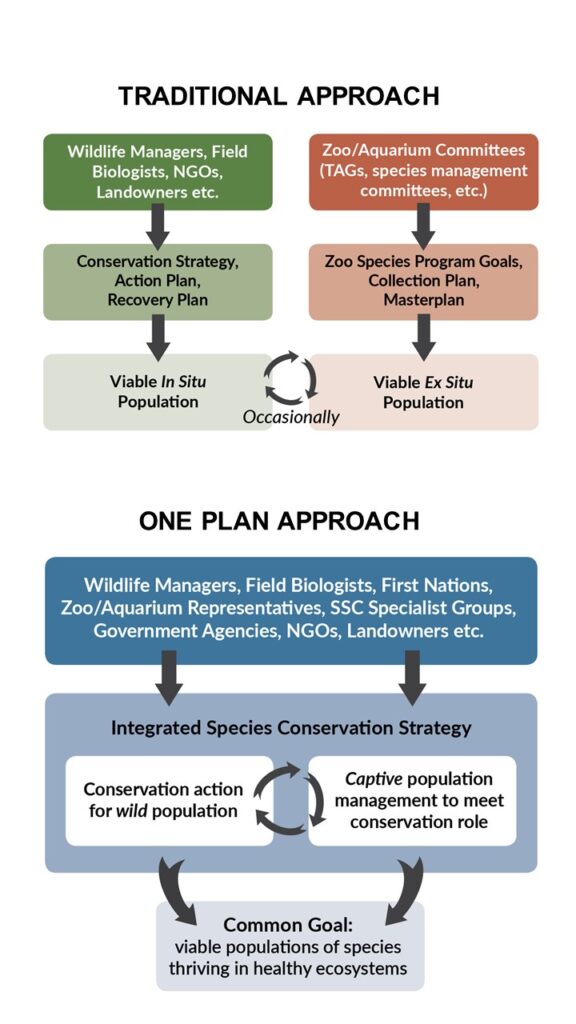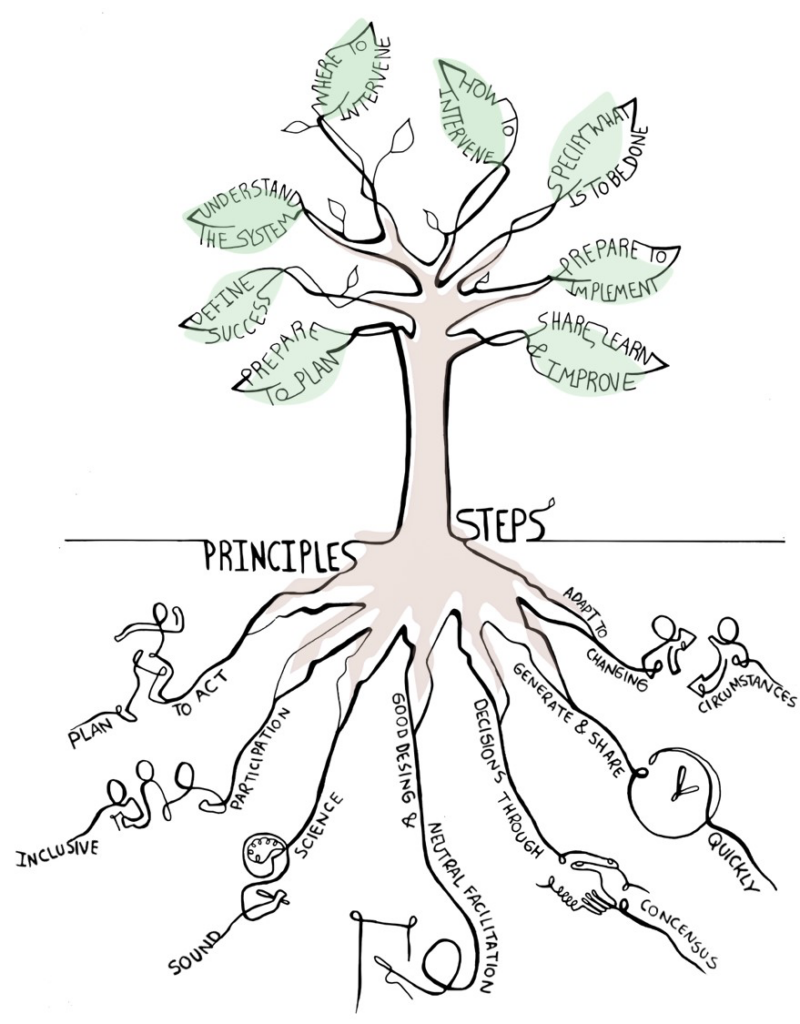
One Plan Approach
The preservation of Canada’s species requires innovation, integration and diverse representation in species recovery planning, and coordination at a national scale.
Traditionally, species conservation planning has followed two parallel, but separate paths. Field biologists and wildlife managers monitor wild populations and develop conservation strategies to conserve threatened species in situ (with wild populations in their natural habitats). Concurrently, the zoo and aquarium community develops long-term goals for species in their care to sustain ex situ populations (in human care outside of a species natural habitat).
Despite efforts to date, the health of our world’s biodiversity is in crisis. It is time to adopt a new approach. The International Union for Conservation of Nature’s (IUCN) Red List of Threatened Species has assessed more than 35,500 species as threatened with extinction on a global level. As of November 2020, over 801 species are listed at-risk by the Committee on the Status of Endangered Wildlife in Canada, and another 41 are considered extirpated or extinct. Given the pervasive impact of humans on wild populations, as well as new and emerging challenges such as diseases and climate change, there is an increasing need for species conservation to include integrated in situ and ex situ efforts. It is time for “all hands on deck”.
The Conservation Planning Specialist Group (CPSG), part of the IUCN Species Survival Commission, coined the term One Plan Approach in 2011. The One Plan Approach is defined as integrated conservation planning for a species both inside and outside its natural range and under all conditions of management, with all responsible parties and available resources engaged to produce one comprehensive conservation plan for the species. In 2020, the IUCN World Conservation Congress passed a resolution calling on its members, including Canada, to promote the integration of in situ and ex situ conservation interventions by applying the One Plan Approach. The One Plan Approach will guarantee that the full complement of knowledge, skills, and strengths are brought together to identify the most effective conservation actions for Canadian species at risk.


Integrated Planning: Principles and Steps
As CPSG’s Regional Resource Center in Canada, the Canadian Species Initiative is actively promoting and applying the One Plan Approach and globally proven species conservation planning methods to ensure a future for all of Canada’s native species. The One Plan Approach is deeply rooted in a set of principles that emphasize sound science and the meaningful participation of all stakeholders. Developed by CPSG, these principles are used to guide a series of assessment and planning steps that continue to evolve in response to the increasing complexity of today’s wildlife conservation challenges. This framework recognizes that conservation planning is most likely to result in effective conservation action when it is based on a thorough analysis of good information, well-defined and achievable goals, the incorporation of multiple perspectives, and agreement among stakeholders.







